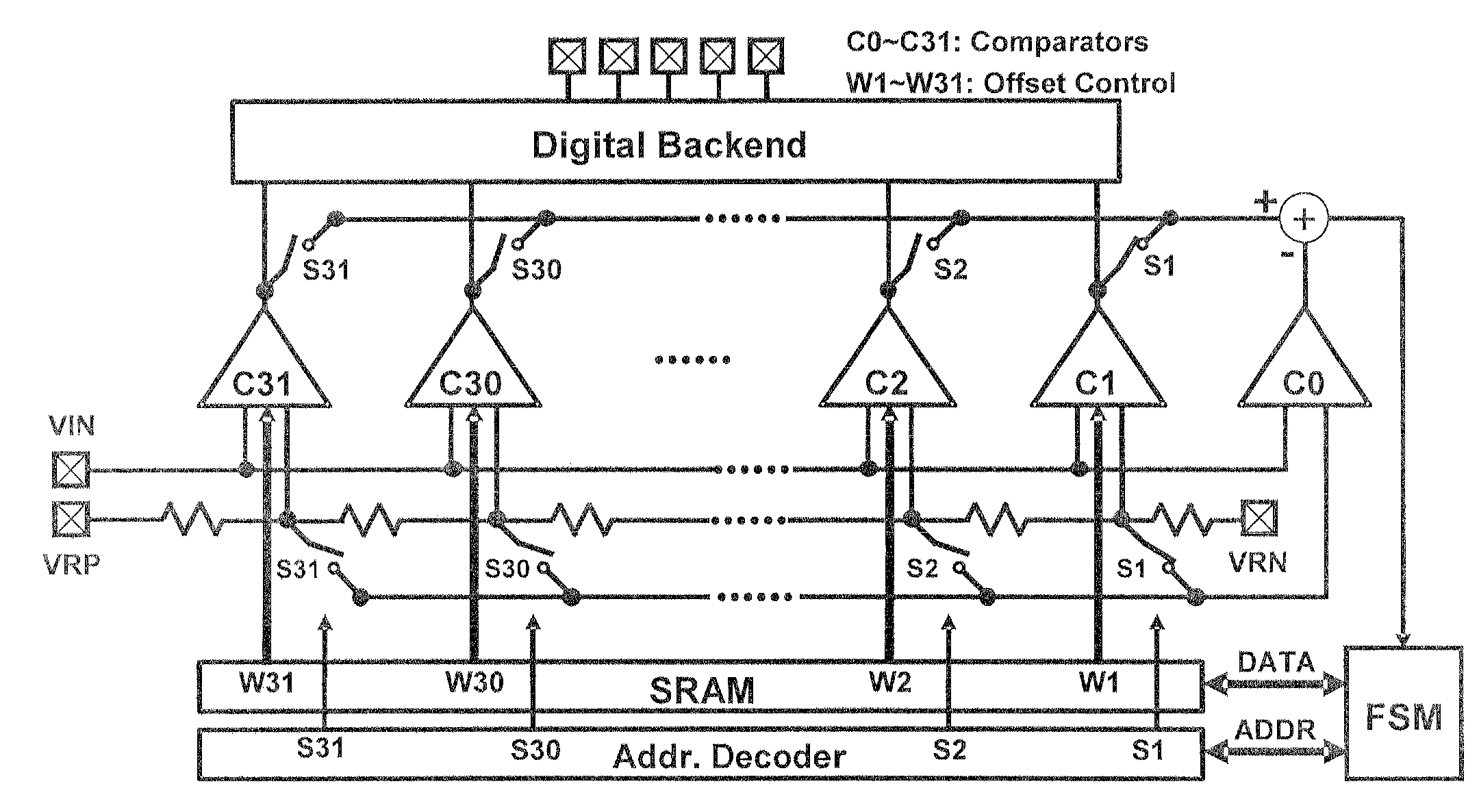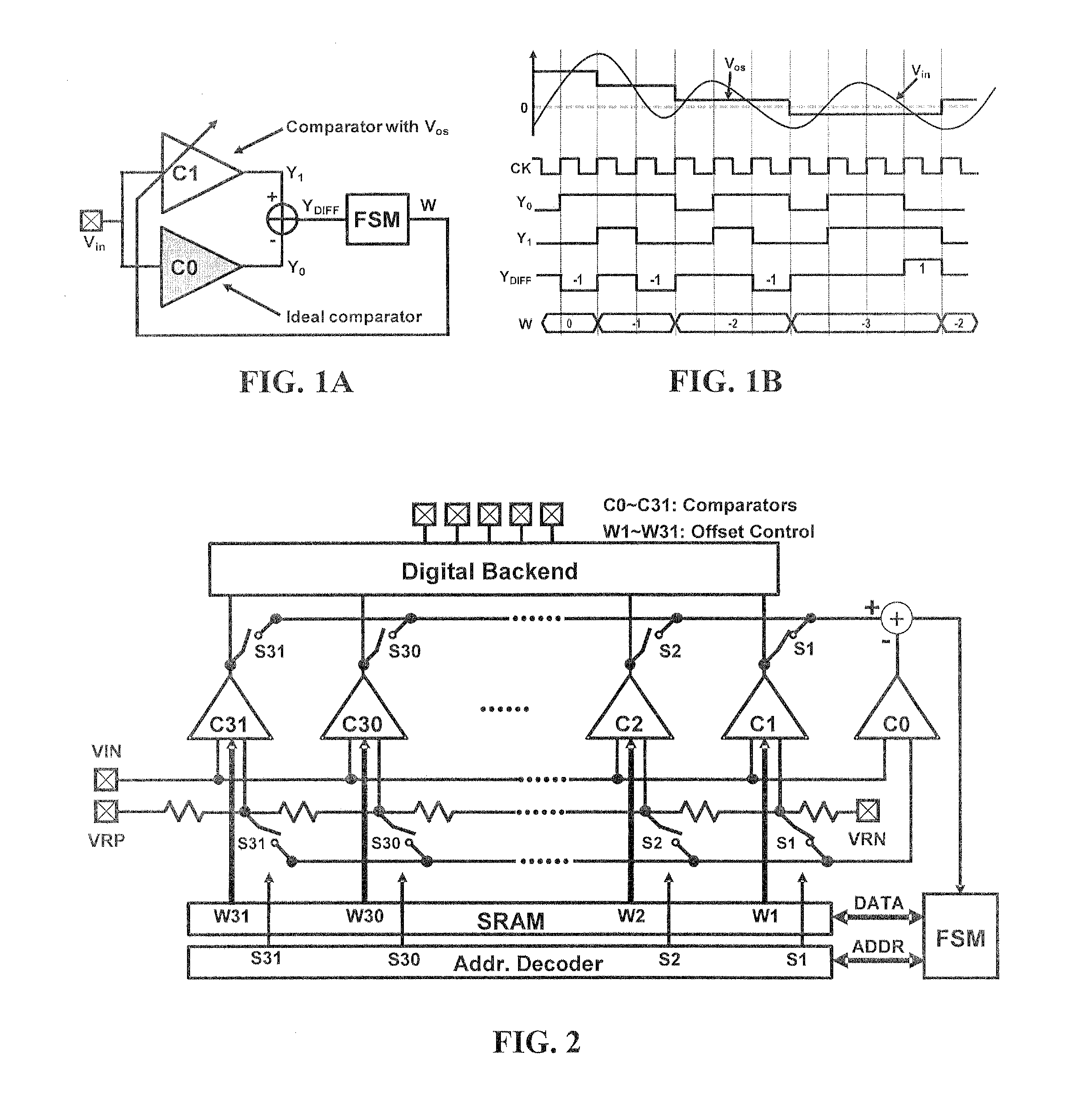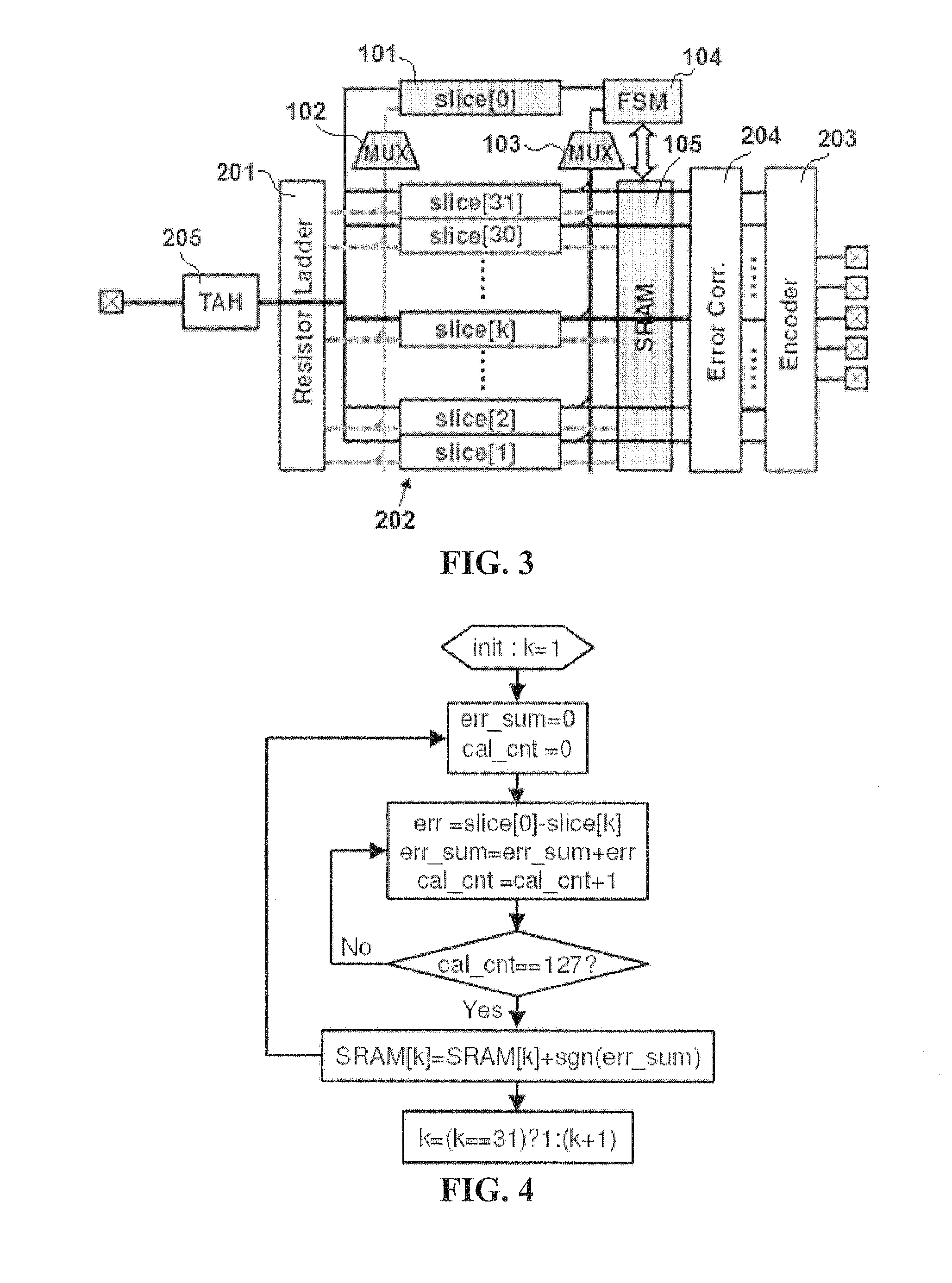Self-healing analog-to-digital converters with background calibration
a technology of analog-to-digital converters and background calibration, which is applied in the direction of code conversion, transmission systems, instruments, etc., can solve the problems of reducing the linearity of adc, affecting the overall performance of adc, and high hardware overhead, so as to reduce the extra area and power overhead, not to degrade the overall performance.
- Summary
- Abstract
- Description
- Claims
- Application Information
AI Technical Summary
Benefits of technology
Problems solved by technology
Method used
Image
Examples
example
5-Bit ADC with Background Calibration
[0061]A self-healing 5-hit ADC according to an embodiment of the invention was designed as shown in the simplified schematic of FIG. 5. A test chip was implemented in 0.13 μm hulk CMOS and mounted on a QFN package. FIG. 6 shows the die micrograph. The ADC occupies an active area of 0.24 mm2, of which only 2.5% is taken by the FSM and 7% by the SRAM.
[0062]As shown in the schematic of FIG. 5, 31 comparators (comparator[1:31]) are used for digitizing an input signal and an additional reference comparator (comparator[0]) is employed. for the calibration. In the schematic, single-ended signaling is shown for simplicity; however, actual implementation is differential. The 31 comparators digitize the sampled signal against 31 evenly spaced reference voltages VREF[1:31] generated by a resistor ladder and produce a 31-bit thermometer code. The thermometer code is then converted to binary format by the digital backend. For example, the thermometer code fir...
PUM
 Login to View More
Login to View More Abstract
Description
Claims
Application Information
 Login to View More
Login to View More - R&D
- Intellectual Property
- Life Sciences
- Materials
- Tech Scout
- Unparalleled Data Quality
- Higher Quality Content
- 60% Fewer Hallucinations
Browse by: Latest US Patents, China's latest patents, Technical Efficacy Thesaurus, Application Domain, Technology Topic, Popular Technical Reports.
© 2025 PatSnap. All rights reserved.Legal|Privacy policy|Modern Slavery Act Transparency Statement|Sitemap|About US| Contact US: help@patsnap.com



